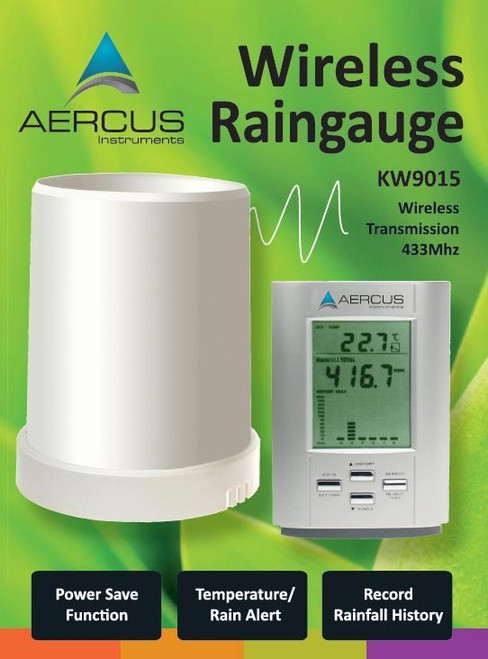How to Choose the Right Rain Gauge for Reliable Rainfall Monitoring
How to Choose the Right Rain Gauge for Reliable Rainfall Monitoring
Blog Article
Revealing the Scientific Research Behind Rainfall Gauges: Exactly How These Gadgets Play an Important Function in Climate Research Study and Ecological Tracking
Rainfall gauges, seemingly straightforward devices, hold a profound importance in the realm of environment research study and ecological tracking. These unassuming instruments silently accumulate among nature's most necessary aspects-- rainfall. Behind their unpretentious exterior lies an intricate scientific research that is important for understanding the dynamics of our setting. As we peel back the layers of this clinical shroud surrounding rain gauges, we uncover a world where accuracy, data accuracy, and careful monitoring merge to introduce a much deeper understanding of our changing environment and its influence on the world.
Relevance of Rain Scales
Rainfall determines play an important function in monitoring and measuring precipitation levels, supplying important data for environment research and evaluation. These gadgets are fundamental in evaluating the quantity of rainfall that occurs in a details location over a specific duration. By gathering and measuring rain, rainfall assesses offer beneficial insights into the distribution and intensity of rainfall, aiding meteorologists, hydrologists, and climatologists in understanding weather patterns and patterns.
Among the crucial reasons that rain assesses are essential is their capacity to give exact and localized information. Unlike satellite or radar-based dimensions, which offer broader monitorings, rain assesses offer specific information particular to the location where they are placed. This local data is essential for different applications, including flooding forecasting, dry spell surveillance, and water resource administration. In addition, long-lasting data collected from rainfall determines assists in analyzing climate modification influences and patterns, contributing substantially to clinical research and decision-making processes. Fundamentally, rain gauges work as essential devices in the field of meteorology and ecological science, playing a crucial role ahead of time our understanding of weather and environment dynamics.
Sorts Of Rain Gauges

Capability and Procedure
In the world of environment research and atmospheric research studies, the efficiency of rain determines lies in their intricate performance and precise functional mechanisms. Rainfall determines are made to properly measure the quantity of precipitation that falls over a certain area throughout a set period.
The capability of rainfall assesses is based on the principle of gathering and measuring rainwater in a standard way. This collected information is critical for comprehending local weather condition patterns, tracking lasting climate fads, and examining environmental effects. To make sure exact dimensions, rain evaluates need to be purposefully positioned in open locations away from obstructions such as buildings or trees that could interfere with the collection process.
The operational element of rainfall determines involves regular upkeep to stop debris accumulation, calibration checks to maintain dimension accuracy, and data taping for evaluation (rain gauge). Overall, the performance and operation of rainfall evaluates are vital for gathering trustworthy precipitation data vital to climate study and ecological tracking
Function in Climate Research
Given the critical importance of exact precipitation dimensions in comprehending weather condition patterns and ecological effects, the role of rain gauges in climate research study is essential. Rainfall assesses give crucial information for climate Check This Out research study by quantifying the quantity of rainfall that tips over a certain area throughout a provided duration. This data is essential for checking lasting trends in precipitation patterns, evaluating the effect of climate adjustment on rains circulation, and boosting environment versions.

Environment researchers use information accumulated from rainfall evaluates to analyze variants in precipitation degrees, identify regional environment fads, and assess the performance of water source management strategies. By contrasting historical rainfall data with present dimensions, scientists can find shifts in precipitation patterns, such as adjustments in the regularity or strength of rains occasions. This details is crucial for comprehending exactly how climate change is influencing rainfall characteristics and can help policymakers make notified decisions pertaining to adaptation and mitigation techniques.
Applications in Ecological Surveillance

In flood projecting, rainfall scale information assists to track rainfall intensity and distribution, allowing authorities to release prompt cautions and take needed steps to alleviate flood risks (rain gauge). Dry spell monitoring counts on rain gauge data to assess dampness levels in the dirt and track rainfall deficits, helping in the identification of drought-prone areas and the application of dry spell action techniques
In addition, rainfall scale information plays an essential duty in water source administration by offering info on water accessibility and usage fads. This information is utilized to make educated decisions regarding water appropriation, preservation steps, and lasting water resource preparation. In addition, in agriculture, rainfall gauge information useful source aids farmers in optimizing watering timetables, crop option, and overall ranch administration practices based upon local precipitation patterns. Generally, rain assesses are essential devices in environmental surveillance, providing important insights that add to informed decision-making and lasting source management.
Final Thought
In final thought, rainfall assesses are essential tools for determining precipitation, supplying useful information for environment study and ecological tracking. With numerous kinds and functionalities, rain determines play an essential duty in recognizing rainfall patterns and their effect on the environment. By precisely gauging rainfall, these devices add to the improvement of scientific expertise and help in making notified decisions pertaining to water resource visit this page management and disaster preparedness.
Rain determines play a crucial role in monitoring and gauging precipitation degrees, providing essential information for climate study and evaluation. The typical rain gauge, known as the "tipping pail" scale, is one of the most commonly utilized gadgets. Ultrasonic rain evaluates usage sound waves to discover the presence of rainfall, supplying real-time information on precipitation levels.Environment scientists make use of information collected from rain gauges to examine variations in rainfall degrees, identify local environment fads, and evaluate the performance of water source administration approaches.In conclusion, rain determines are essential tools for determining rainfall, offering useful data for environment research and environmental surveillance.
Report this page